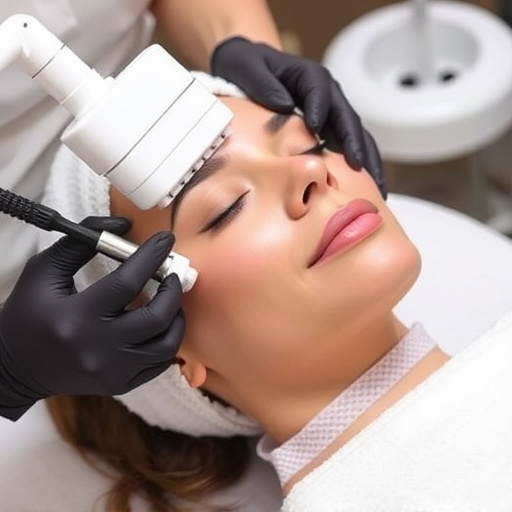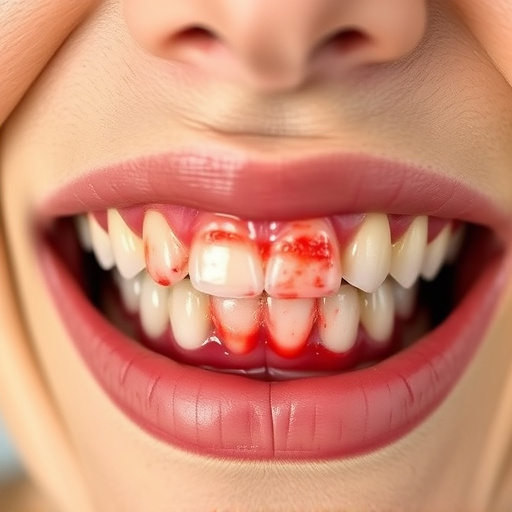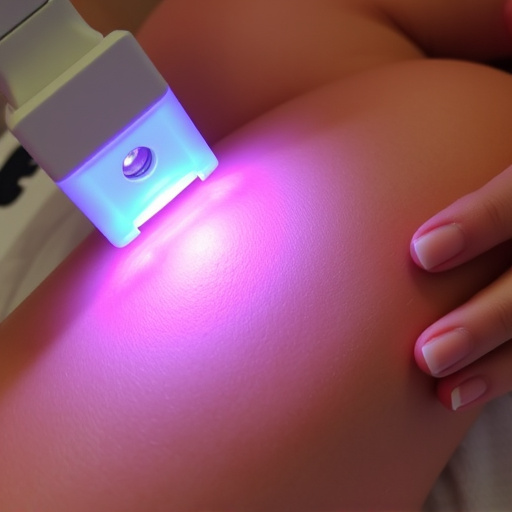Dermatitis treatment involves addressing complex interactions between environmental triggers and immune responses with tailored therapies. Combining topical medications, systemic treatments, light therapy, and cosmetic procedures reduces inflammation, alleviates symptoms, and promotes healing. Personalized skincare plans, including gentle cleansing and advanced treatments, manage symptoms, prevent flares, and significantly improve quality of life for dermatitis sufferers.
Dermatitis, a common skin condition, can significantly impact daily life. A comprehensive understanding of its causes is key to effective management. This article delves into the intricacies of dermatitis treatment plans, offering insights on various therapies and strategies. From identifying triggers to implementing symptom-relieving measures, we explore how to navigate this journey. By grasping the fundamentals of dermatitis care, individuals can better manage their symptoms, prevent flare-ups, and achieve clearer, healthier skin.
- Understanding the Causes of Dermatitis
- Common Treatments and Therapies
- Managing Symptoms and Preventing Flares
Understanding the Causes of Dermatitis

Dermatitis, a broad term encompassing various skin conditions, arises from a complex interplay of factors. While environmental triggers like harsh weather, allergens, and irritants play a significant role, it’s equally crucial to understand the underlying immune system responses that lead to inflammation and irritation. Different types of dermatitis, such as atopic dermatitis (eczema), contact dermatitis, and seborrheic dermatitis, each have distinct causes. For instance, atopic dermatitis is often linked to genetic predisposition and dysregulated skin barrier function, while contact dermatitis results from direct exposure to allergens or irritants.
A comprehensive dermatitis treatment plan aims to address these multifaceted causes through a combination of strategies. Customized facials can offer deep cleansing and targeted treatments for specific skin concerns, promoting overall skin health. Procedures like pore refinement and wrinkle reduction may also be incorporated to minimize visible symptoms and enhance skin texture. Ultimately, effective dermatitis management involves not just treating the surface but understanding and addressing the root causes to achieve lasting relief.
Common Treatments and Therapies

Dermatitis treatment plans often involve a combination of common treatments and therapies designed to soothe inflammation, alleviate symptoms, and promote healing. One standard approach is topical therapy, which includes applying medications directly to the affected area. These may include corticosteroids to reduce itching and swelling, calcineurin inhibitors for more severe cases, or antihistamines to block histamine release and calm skin reactions.
In addition to topical treatments, systemic therapies are sometimes prescribed for dermatitis. This involves taking medications orally or intravenously to suppress the immune system’s response. These can be effective for severe or widespread dermatitis. Other therapies like light therapy (phototherapy) and ultraviolet (UV) light treatment can also be used for specific types of dermatitis, helping to reduce inflammation and improve skin texture. Moreover, procedures such as skin tightening, skin rejuvenation, and skin brightening techniques are sometimes employed alongside these treatments to enhance the overall appearance and health of the skin.
Managing Symptoms and Preventing Flares

Managing symptoms and preventing flares is a key focus in any dermatitis treatment plan. The goal is to alleviate itching, redness, and inflammation while identifying and avoiding triggers that can set off future outbreaks. This often involves a combination of topical medications, such as corticosteroids or calcineurin inhibitors, which can be prescribed by dermatologists to reduce skin irritation. Additionally, anti-aging treatments like retinoids may be incorporated into the skincare routine to promote cell turnover and repair damaged skin, leaving it healthier and less prone to flare-ups.
Personalized skincare is paramount in dermatitis management. Patients should work closely with their dermatologist to create a tailored plan that addresses their specific symptoms and lifestyle. This might include simple measures like using gentle, fragrance-free cleansers and moisturizers, as well as more advanced non-surgical treatments like light therapy or oral medications. By adopting these strategies, individuals can effectively manage their dermatitis, minimize discomfort, and improve their overall quality of life.
Dermatitis treatment plans aim to soothe symptoms, manage flare-ups, and address the underlying causes. By understanding the specific type of dermatitis and implementing a combination of therapies, such as topical medications, light therapy, and lifestyle adjustments, individuals can achieve clearer, healthier skin. Consistent self-care practices, including gentle skincare routines and stress management, play a crucial role in preventing future flares and promoting long-term relief.














